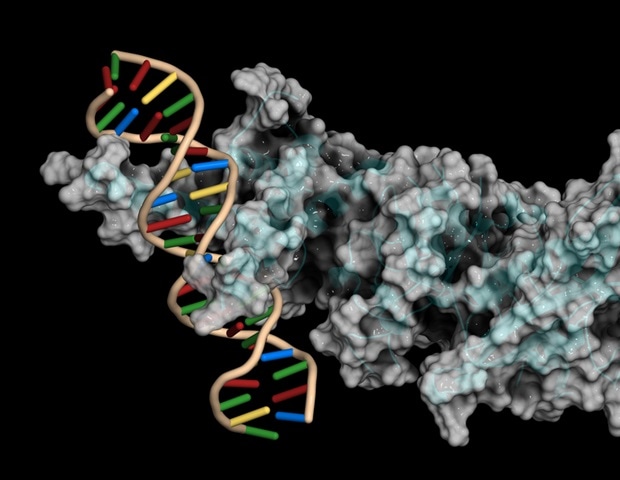New study uncovers how antibody combinations synergistically boost complement activation to combat drug-resistant Klebsiella pneumoniae infections.
 Study: Agnostic B cell selection approach identifies antibodies against K. Pneumoniae that synergistically drive complement activation. Image Credit: Kateryna Kon / Shutterstock.com
Study: Agnostic B cell selection approach identifies antibodies against K. Pneumoniae that synergistically drive complement activation. Image Credit: Kateryna Kon / Shutterstock.com
In a recent Nature Communications study, researchers investigate antibody-dependent complement activation during Klebsiella pneumoniae infection.
K. pneumoniae infection
K. pneumoniae is frequently the source of hospital-acquired infections and, due to the widespread use of antibiotics in these settings, has also acquired numerous resistance genes. In fact, over 700,000 antibiotic resistance-related deaths were attributed to K. pneumoniae infections in 2019 alone.
The lipopolysaccharide (LPS) outer membrane of K. pneumoniae consists of a membrane-anchored lipid A that is connected to a core oligosaccharide region. An O-antigen polysaccharide chain can be found on the surface of this oligosaccharide region and consists of repeating sugar moieties.
K. pneumoniae infections are often classified based on the expression of different O-antigen types, with O1, O2, and O3 O-types responsible for about 80% of clinical infections. Most antibiotic and hypervirulent strains of K. pneumoniae express either the O1 or O2 antigen.
In addition to the O-type, the type of polysaccharide capsule present on the surface of K. pneumoniae can also provide important insights into the immune-activating properties of this bacteria. To date, over 70 different capsule types have been identified.
Although most patients infected with K. pneumoniae are immunocompromised, they typically retain a functioning complement system, thus suggesting the potential utility of complement-enhancing antibodies for treating this type of infection. Nevertheless, it remains unclear which bacterial antigens should be targeted to trigger a potent complement response.
Identifying antibodies against K. pneumoniae
Memory B-cells (mBCs) express membrane-bound antibodies as B-cell receptors (BCRs) and are the preferred source for antibody discovery. To identify human monoclonal antibodies (mAbs) against bacteria, most research has investigated antibodies that target a single antigen. However, it is important to obtain antibodies against different antigens on the same bacterial strain to study differences in antibody-regulated complement activation and better assess the efficacy of combining mAbs.
In the current study, human antibodies that target K. pneumoniae were determined using B-cells that can identify fluorescently labeled K. pneumoniae based on their BCR. Fluorescent dyes ATTO-488 and Cy5 were labled to LPS, which is a conserved component of Gram-negative bacteria. Flow cytometry and direct stochastic optical reconstruction microscopy (dSTORM) techniques were used to detect successful surface labeling of K. pneumoniae.
B-cells from healthy individuals were used to isolate those that were directed against K. pneumoniae antigens. B-cells that were positive for either ATTO-488 or Cy5 labeled K. pneumoniae were identified. However, approximately 0.05% of the B-cells were positive for both ATTO-488 and Cy5 labeled bacteria.
Fluorescent microscopy analysis revealed that the double-positive B-cell population was strongly enriched for CD27+ mBCs. Many bacteria attached to the double-positive sorted B-cells, whereas single-positive sorted B-cells did not exhibit significant bacterial attachment.
B-cells were selected against two clinical K. pneumoniae isolates KpnO2 and and KpnO1, both of which are dominant multidrug-resistant K. pneumoniae strains. Initially, 368 double-positive B-cells were isolated for KpnO2 by single-cell sorting. After screening, 17 and 12 mAbs with a unique CDR3 bound to KpnO1 and KpnO2 were identified, respectively.
Antibody-dependent complement activation on the surface target
Although antibody binding to the target surface is considered to be the first step of the complement cascade, the researchers of the current study observed that antibody binding K. pneumoniae did not induce the complement system and, rather, that this activation of the complement system is dependent on the target antigen.
A total of 12 antibodies specifically targeted the O2-antigen, whereas three targeted the capsule (KL110). Although all anti-O2-antigen antibodies enabled activation of the complement system, anti-capsule antibodies were less effective in their stimulation and ability to to form hexameric IgG clusters.
The introduction of clustered enhancing mutations led to complement activation by anti-capsule antibodies for both K. pneumoniae and S. pneumoniae. More research is needed to better understand relative the mobility, surface concentrations, and clustering of capsular polysaccharides and O2 glycans on K. pneumoniae.
Four antibodies including UKpn72, UKpn77, UKpn69, and UKpn76 effectively recognized the conserved epitope within the O1-antigen and cross-reacted with all tested O1 strains. These antibodies also successfully detectd the O1-antigen outside the bacterium.
For all complement-activating antibodies, C3b deposition on the surface of K. pneumoniae caused activation of complement-mediated phagocytosis and elimination by human neutrophils.
Antibody combinations synergistically activate the complement system
A combination of two anti-capsule antibody clones caused synergistic binding and complement activation. Experiments using F(ab’)2 fragments revealed that cooperative binding between anti-capsular antibodies is independent of the Fc tails. However, the subsequent complement activation is mediated by the Fc tail. The two antibody clones mediating synergy were derived from the same donor, thus highlighting the possibility that these antibodies could act together in vivo.
Conclusions
The current study discovered potential antibodies to treat K. pneumoniae infections and revealed that combinations of different antibodies can robustly and synergistically enhance complement activation on K. pneumoniae.
Journal reference:
- van der Lans, S. P. A., Bardoel, B. W., Ruyken, M., et al. (2024) Agnostic B cell selection approach identifies antibodies against K. Pneumoniae that synergistically drive complement activation. Nature Communications 15(1); 1-17. doi:10.1038/s41467-024-52372-9







